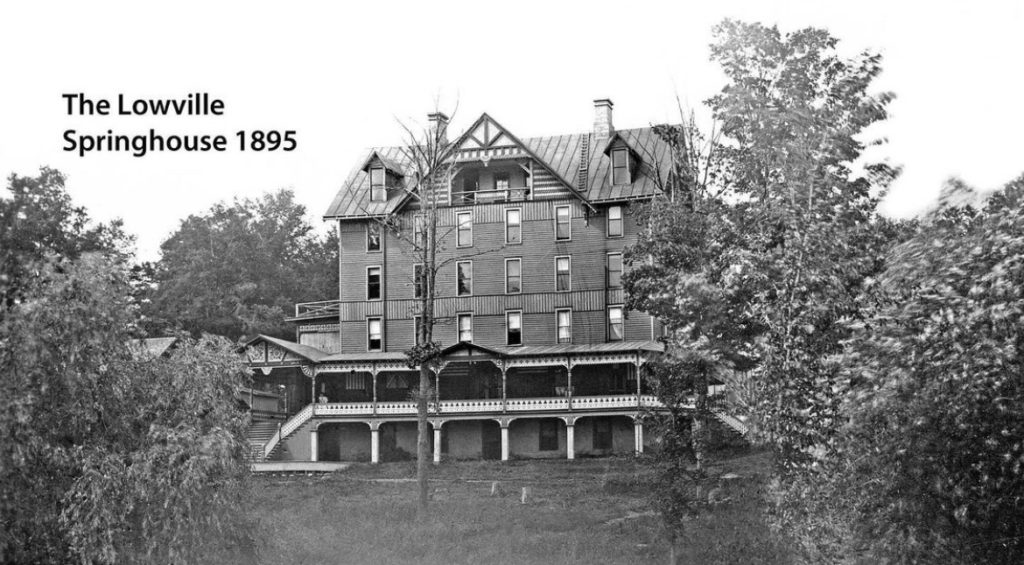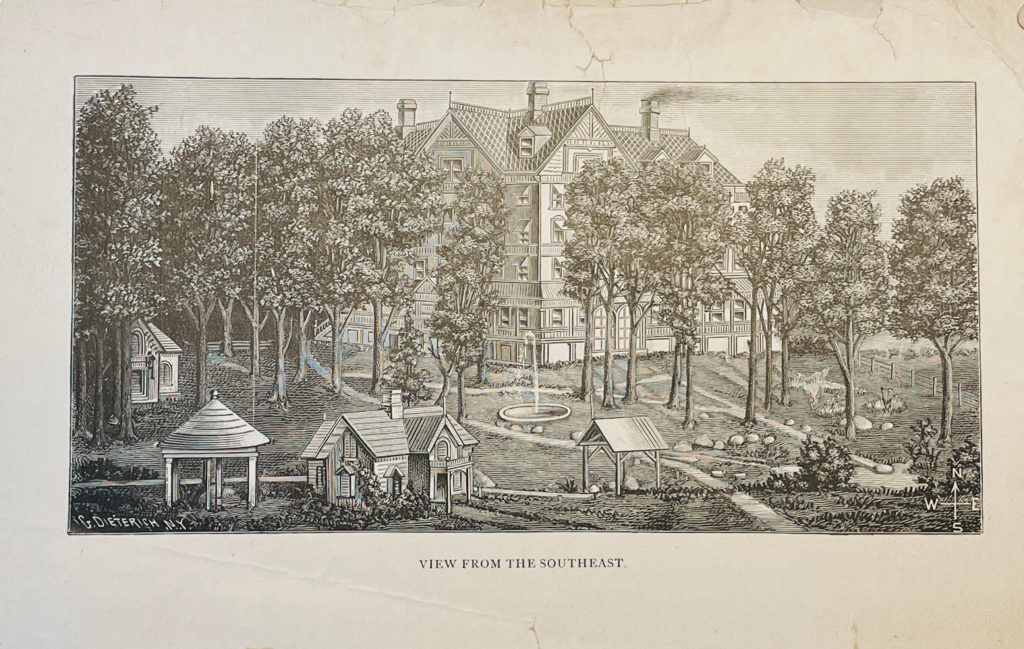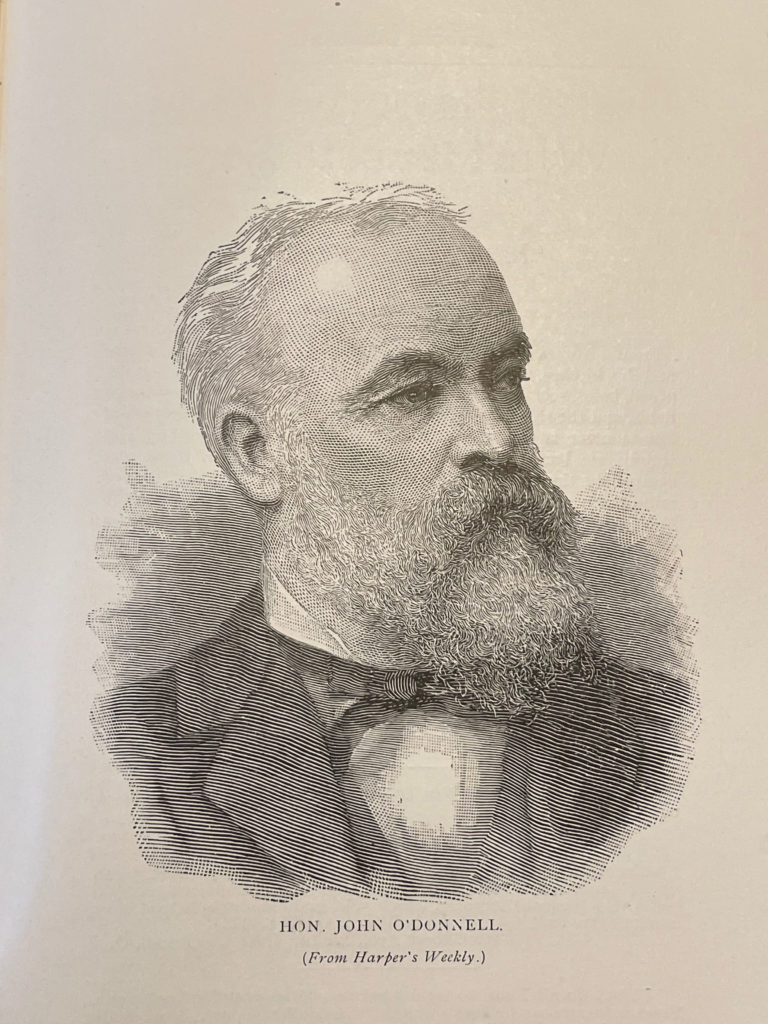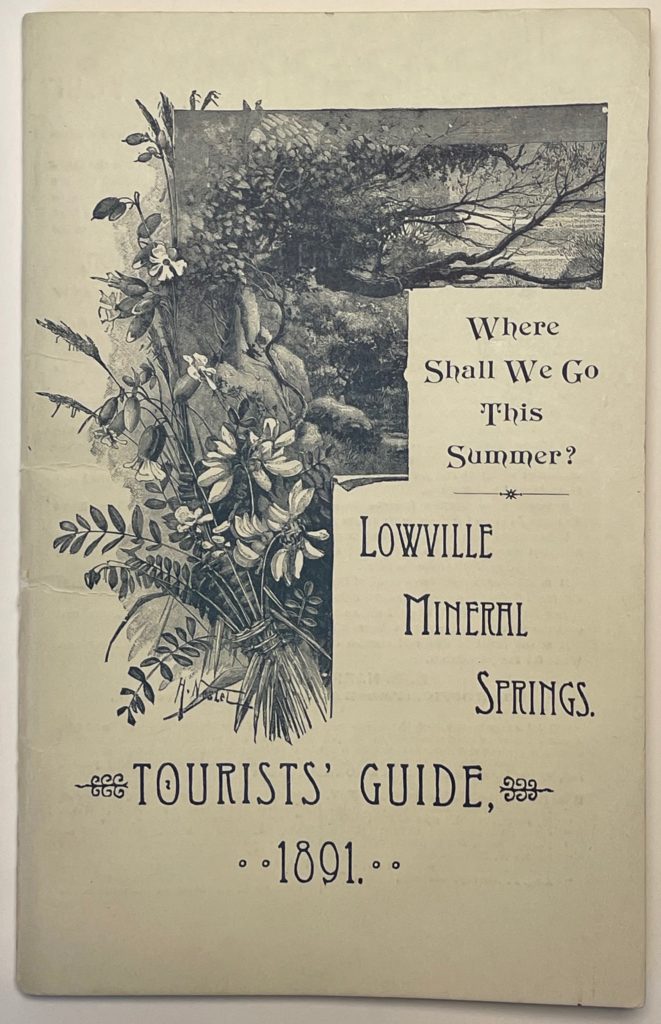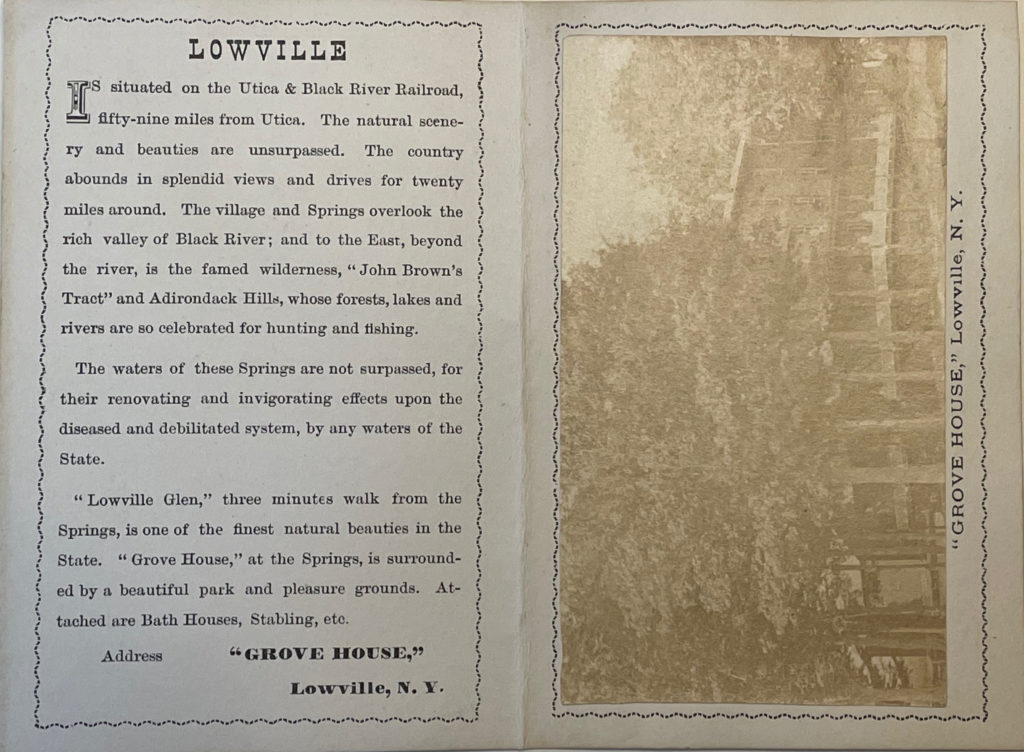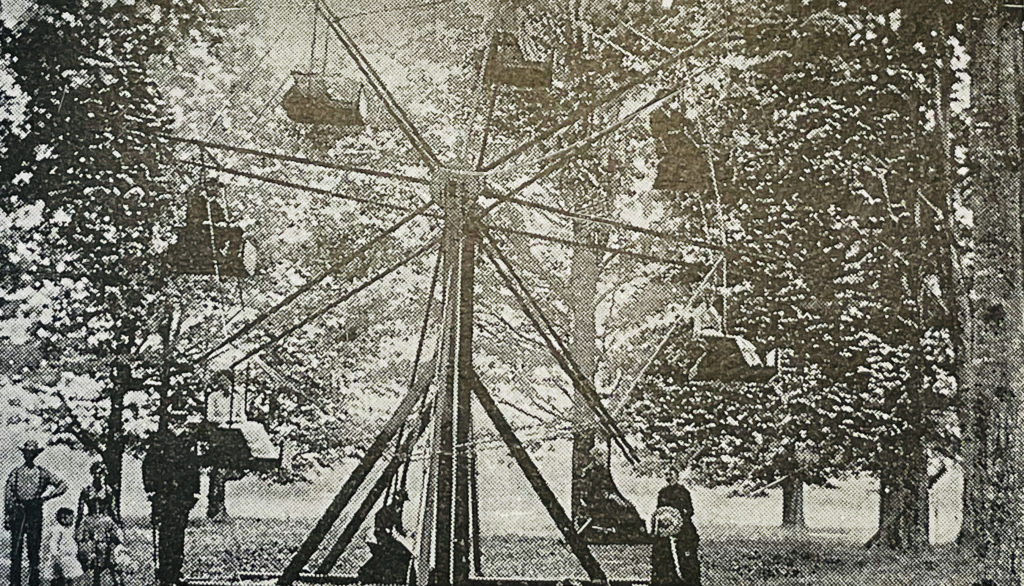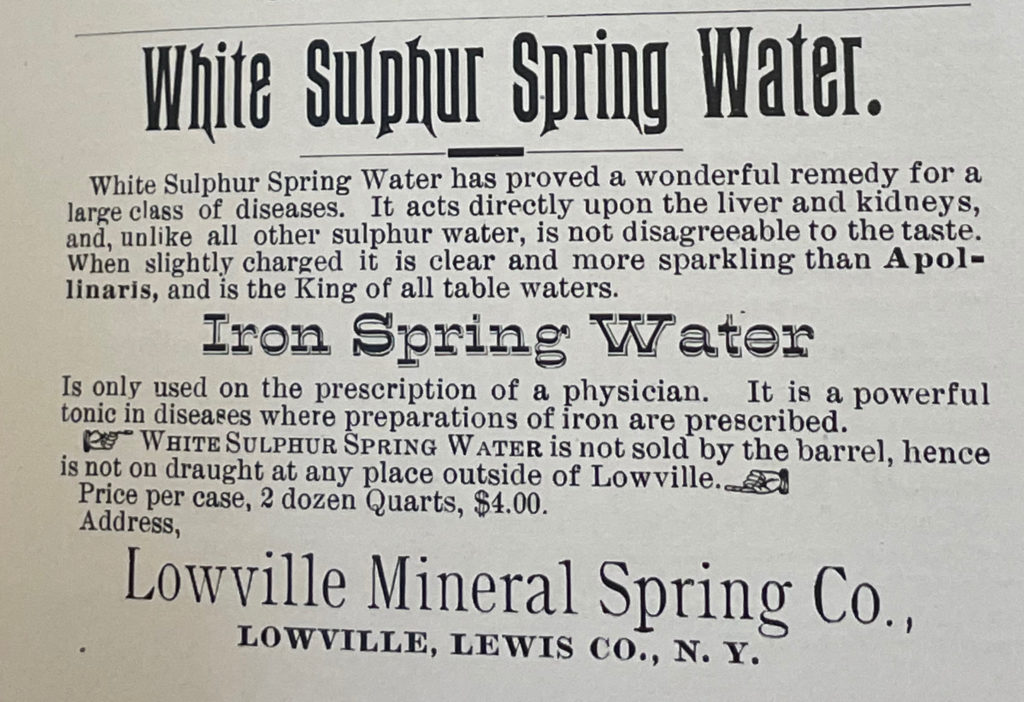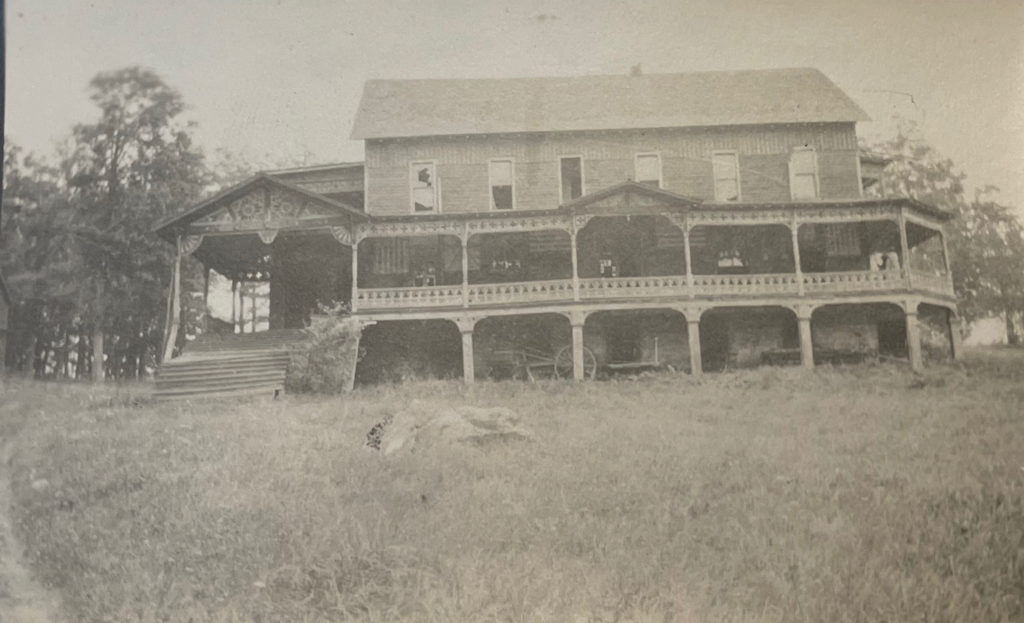The Lowville Mineral Springs House
“Taking the waters” in Lowville in the late 1800s
You wouldn’t know it today, but in the latter part of the 1800s, one of the top tourist attractions in Lewis County was the Lowville Mineral Springs House – located a mile west of the village along what today is Route 12 (including most everything north of that road from All Seasons Landscaping to the Gordon Road, and all the way over to Mill Creek).
At the time this restorative resort was built, “taking the waters” was part of the emergence of a medical and public health industry evolving away from bloodletting, blistering and purgatives as the principal treatments for many ailments. Lowville, of course, was not alone in this emergence, as various New York locations were thought to have beneficial health properties due to the existence of “healing mineral springs.” And these locations began to flourish as people increasingly looked to them not only as places of healing, but as high society and entertainment venues.
The most well-known of these was the famous Saratoga Springs resort outside Albany, but there were others around the state – and the Lowville Mineral Springs House quickly took its place among those. Over a period of thirty years or so, people increasingly would travel to Lowville to enjoy its healing mineral springs at a fine hotel amidst beautiful scenery.
The original hotel, known as the “Grove House,” was constructed in 1872 by Dr. Horatio S. Hendee, not only a respected local physician, but a well-known investor in building projects around the county. Quite quickly, Hendee sold off interests in the hotel as it began to develop. Ultimately, the entire estate was purchased by Lowville’s John O’Donnell, who not only was the publisher of The Lowville Times newspaper and the builder of The Times Block in downtown Lowville, but he had served as the area’s Assemblyman and State Senator and ultimately ended up as the State’s Railroad Commissioner – a position of extreme political importance at the time. Not surprisingly, O’Donnell used his many influences to promote the Mineral Springs House.
While the main portion of the hotel burned in the 1880s, the O’Donnells built it back bigger and better. And at its height, the Mineral Springs House resort encompassed several hundred acres of land, and the rebuilt Grove House was considered one of the finest buildings in the state. With its extensive wrap-around porches and wide verandas, the hotel sat amidst a beautiful grove of 150 maple trees and could accommodate upwards of 100 guests at a time. And due to demand, additional cottages were built around the estate to accommodate a growing guest list.
The hotel itself boasted a large performance stage, and entertainment acts from as far away as New York City were regularly booked to perform there throughout the season. Dedicated carriages ferried guests back and forth to Lowville and its train station. Telegraph (and later telephone) services were available to all guests, as were complete laundry services. The rooms were large, well-furnished and well-ventilated. And the hotel was heated by the then modern “Dead Air Cell System,” which had been developed and patented by O’Donnell and was regarded by architects and engineers at the time as both “effectual and inexpensive.”
The house had a fine kitchen and dining room to which guests were granted complete access, and its food operations were largely self-sufficient. The estate operated its own “Maple Grove” dairy farm to provide its guests with fresh, high quality milk, cream, and butter. The farm had a herd of “fine blooded” Jerseys, a hennery to provide fresh eggs, livestock for meats, and extensive vegetable gardens and greenhouses. And every spring, sap was collected from the maple trees on the estate and maple syrup, candies and butters were produced.
The estate also had lavish grounds, and its gardens were known for their serene beauty. There was lawn tennis, a track for horseback riding and driving, a great revolving swing (quite like a Ferris Wheel), and croquet. Guests could swim in its manicured ponds and freely wander the beautiful grounds and miles of trails, which included access to the nearby Mill Creek gorge, euphemistically called “the Lowville Glen.”
But the big draw, of course, were the springs. And there were at least five natural mineral springs on the estate: three were pure water (one of which was known as the silver springs); one was white sulphur; and the last was iron. Doctors at the time recommended such springs to heal a variety of ailments, ranging from “impurities of the blood,” rheumatism, neuralgia, bronchitis, pleurisy, and liver problems to insomnia and depression.
Guests would drink the silver and white sulphur spring water, with doctors deeming it perfectly safe and beneficial. The iron water was also consumed, but doctors only recommended certain amounts for specific ailments. The white sulphur water in particular was said to have “proved a wonderful remedy for a large class of diseases. It acts directly upon the liver and kidneys, and, unlike all other sulphur water, is not disagreeable to the taste. When slightly charged, it is clear and more sparkling that Apollinaris, and is the king of all table waters.”
Spring water was not only popular for drinking, but also for bathing, in both cold and hot baths. The estate erected two large bathhouses, one for men and the other for women. Water from the white sulphur and iron springs were brought to the bathhouses and heated for the comfort of guests.
The Lowville Mineral Springs House handled hundreds of visitors each season, which typically began in late spring and ran all summer into mid-fall. Borders paid $2-3 a day or $6 a week (local non-boarders could also enjoy the springs’ benefits, as jugs of spring water were bottled and brought to the village of Lowville to be sold for $0.20 per jug).
More than just a health resort, the grounds were used as a center for entertainment, meetings, and community events. Perhaps due to O’Donnell’s stature and political influence, a wide variety of political candidates from across New York state would regularly come to the Lowville Mineral Springs to plan their campaigns, while taking advantage of the quiet, relaxing, and revitalizing atmosphere and environment. The O’Donnells prided themselves on their hospitality and, for a number of years, lived right on the grounds. They developed a reputation for treating every guest as if they were family and regularly received guest testimonials praising the estate for its exceedingly kind owners, its healing waters, and beautiful scenery.
And yet, despite all its luxury, success and acclaim, the venture was relatively short-lived. By the early 1900s, John O’Donnell had died, the business had largely shut down and parts of the resort thereafter either burned, withered away from neglect or were plowed under by local farmers.
Sadly, nothing remains of the resort or its lavish grounds today.
Explore More Posts
Categories
- Goings On (5)
- Objects & Artifacts (2)
- People (9)
- Places (5)
- Preservation (2)
- Uncategorized (14)

